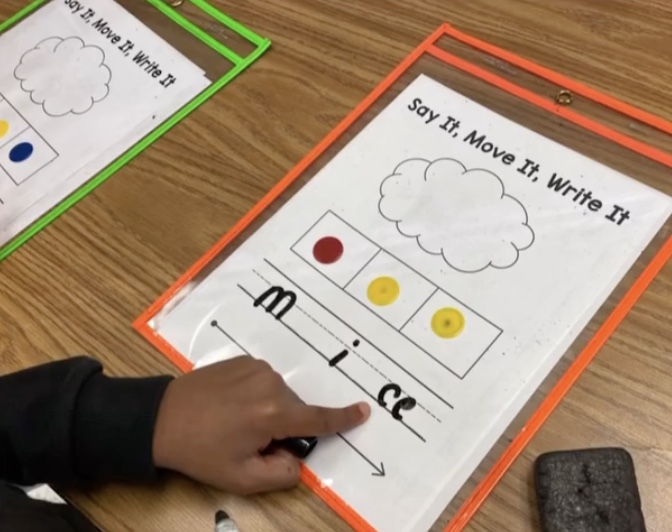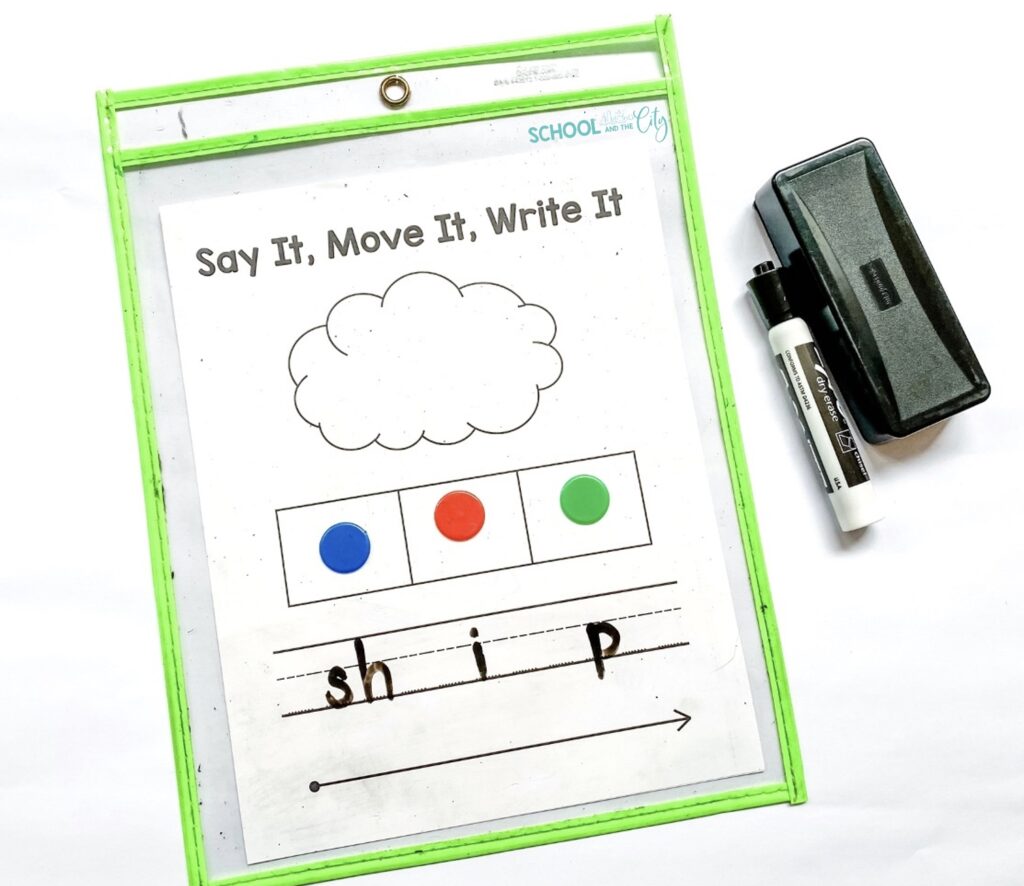You may have heard the term “orthographic mapping” more and more often lately. Wondering what it is and how it benefits students? Let me break it down simply for you.
What is orthographic mapping?
“Orthographic mapping is the process we use to permanently store words into long-term memory.” – David Kilpatrick
In other words, orthographic mapping is not a classroom task or activity – It’s a mental process that happens in our brains when we are learning to read.
Elementary Classroom Application
We can support students’ brains in orthographic mapping by intentionally using evidence-based instructional routines.
You may hear of classroom activities called…
- Word Mapping
- Phoneme-Grapheme Mapping
- Sound-Symbol Mapping
These are all different names for the same thing: matching spoken sounds to written letters.

When students are able to match spoken sounds (phonemes) to the respective written letters (graphemes), that’s evidence that they have a solid understanding of the alphabetic principle:
the idea that letters and letter patterns represent the sounds of spoken language.
These are the mats/templates that I use with my students to map words in order to support the orthographic mapping process.

Here’s how it works:
- Say the word
- Students repeat the word
- Students segment the sounds (phonemes) while moving the chips into sound boxes
- Students write the letters (graphemes) to spell the sounds (phonemes)
- Students check their words by decoding: making each sound and blending the word
Once you teach this routine, it’s easy to implement with any phonics skill! Do this often with your students that need explicit phonics support. (Note: All will benefit!)
I typically use the “Say It, Move It, Write It” mats that I made, but there are lots of other options out there if you want to switch it up. I particularly love the seasonal freebies from IMSE. (Find them here.)
The More You Know…
Why are sounds involved in spelling?
In order for students to spell a word correctly and to store it in their orthographic memory, it’s imperative that they are able to hear all of the sounds within that word – a strong phonemic awareness. Phonemic awareness is the ability to identify and manipulate speech sounds, which is critical for kids learning to read and write. So, Direct instruction in a variety of phonemic awareness skills reduces the likelihood of reading failure.
“Phonemic awareness training provides the foundation on which phonics instruction is built. Thus, children need solid phonemic awareness training for phonics instruction to be effective.” – Wiley Blevins, 2017
What is the science of reading?
The science of reading is more than just a buzzword – It’s science. And although it may seem like a trend, it’s not new. It’s 30+ years of research on how the human brain learns to read. It’s not what we’re teaching, but how we teach it.
Years of evidence shows that 95% of students are cognitively capable of learning how to read. In order to make this happen, we have to provide evidence-based, explicit, systematic literacy instruction.
Who am I?
Hi! I’m Kristin. I’m currently working full-time as a literacy coach and interventionist in a public elementary school. I have completed LETRS training for teachers and administrators, and I’m trained as a local LETRS facilitator.
Thanks for being here! Other than this website, my favorite place to hang out is on Instagram @schoolandthecity.